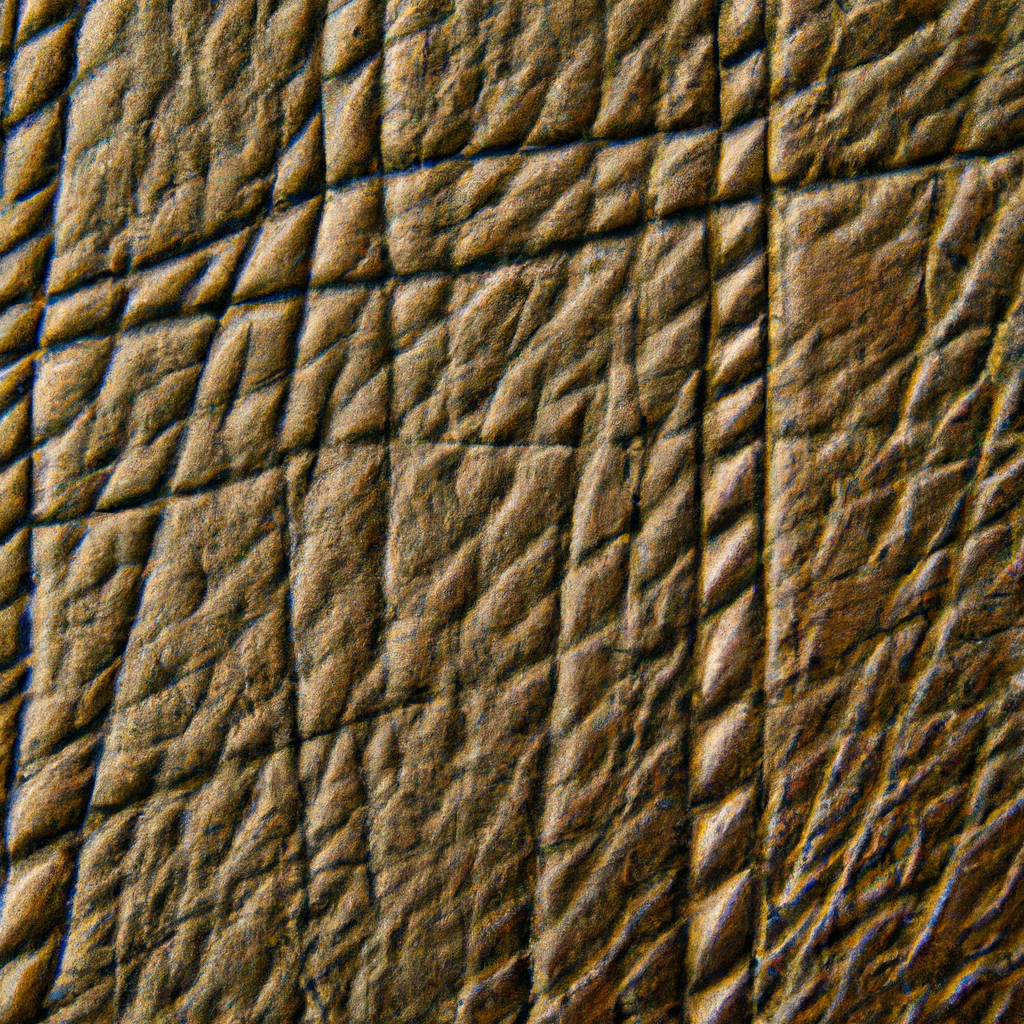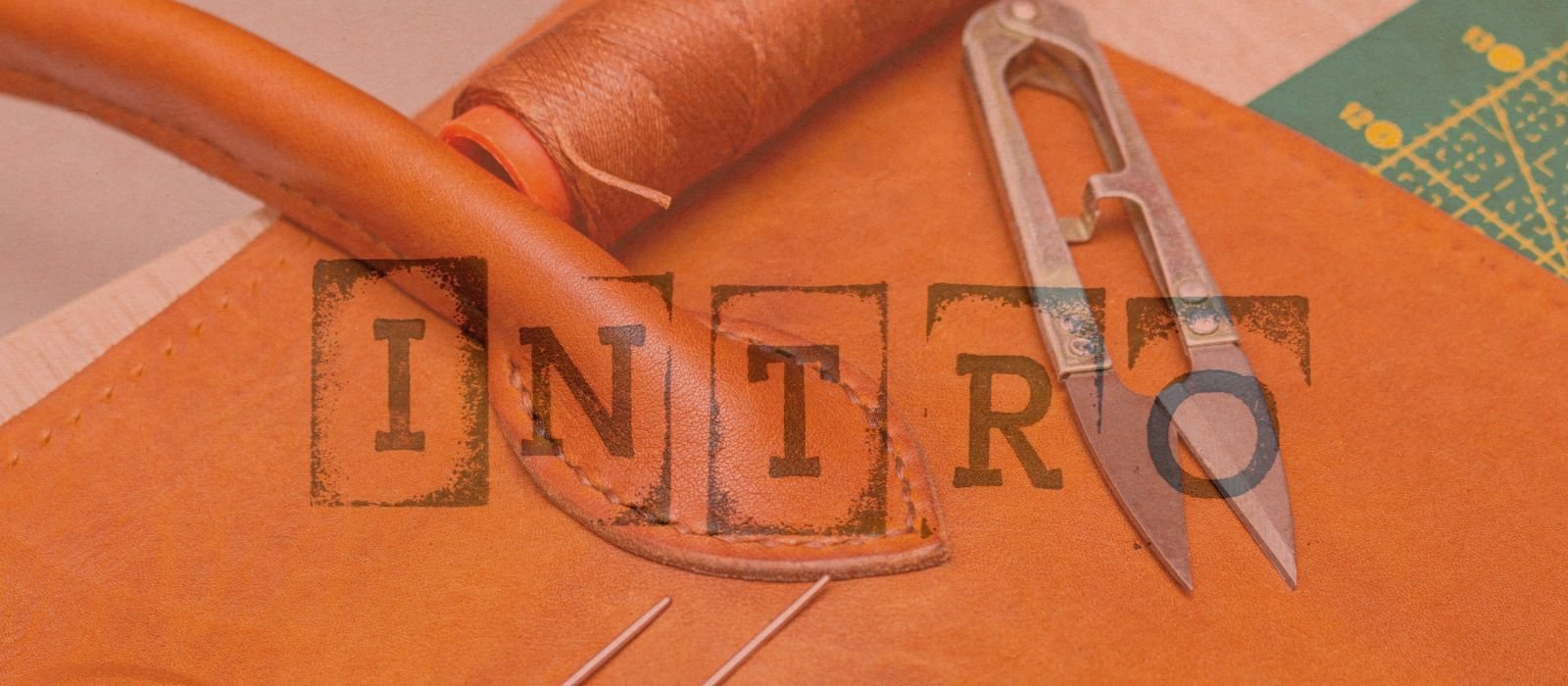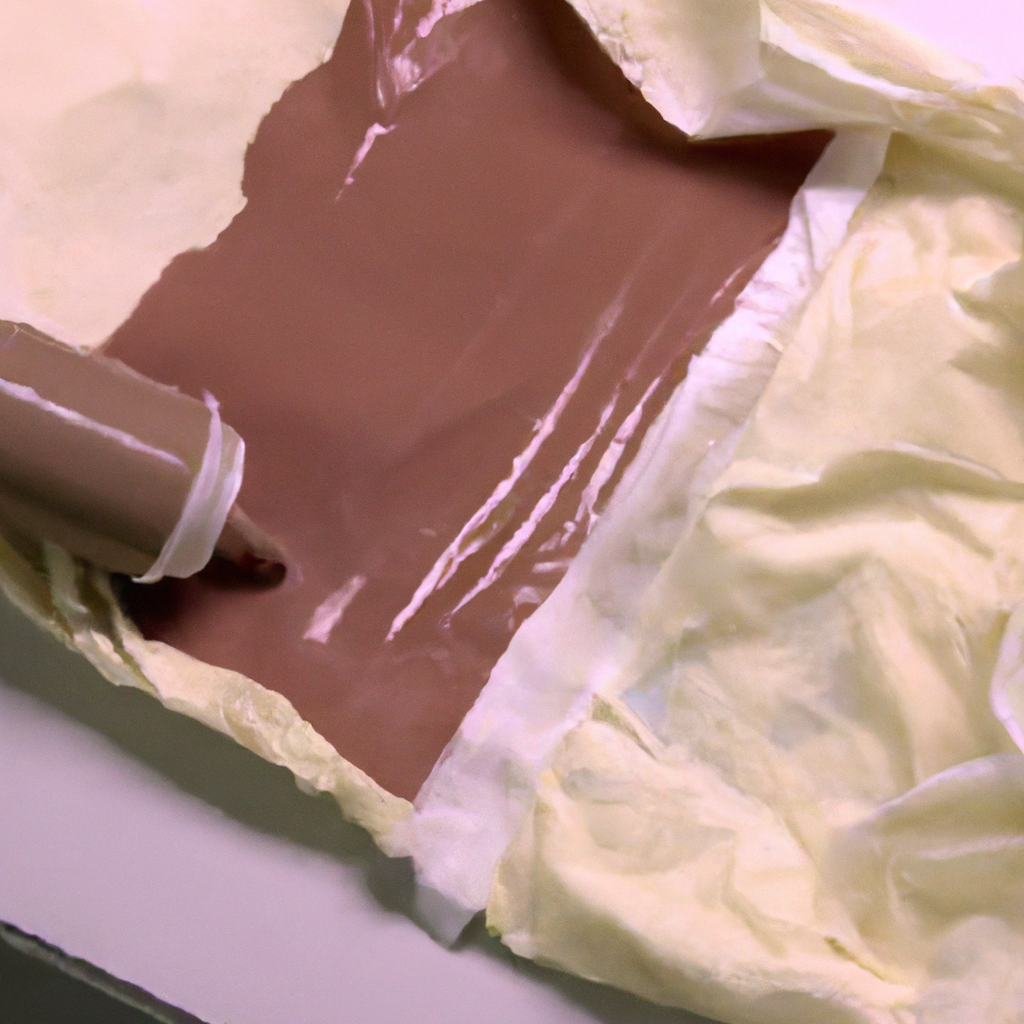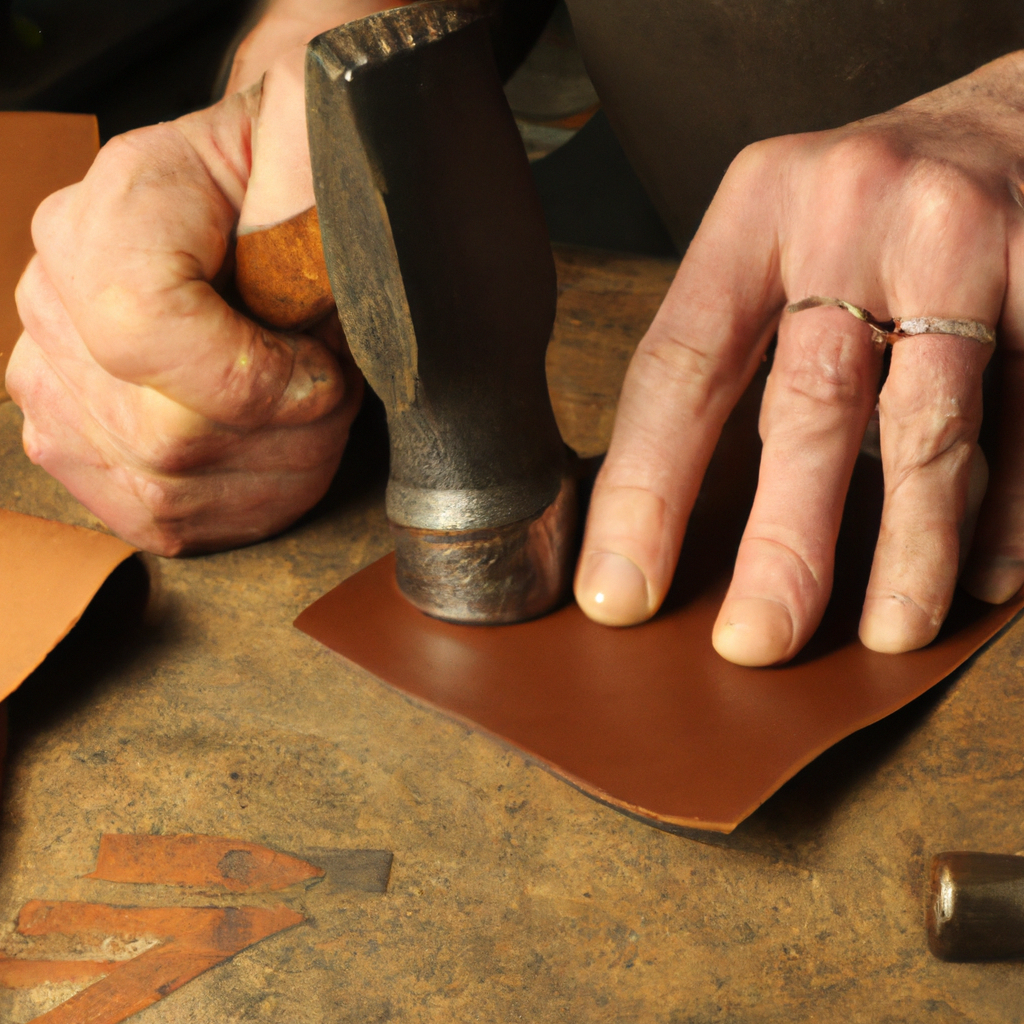If you’re embarking on the journey of hand-stitching leather, you may find yourself pondering the perplexing question of what size and type of needles to use. Fear not, for in this article, we will unravel this mystery and guide you towards the perfect needle for your leathercrafting endeavors. Whether you’re an experienced leatherworker or just starting out, understanding the right needle size and type is crucial for achieving the desired results. So, grab a cup of tea, sit back, and let’s explore the fascinating world of needles for hand-stitching leather.

Factors to Consider
When it comes to hand-stitching leather, there are several factors that you need to consider to ensure the best results. These factors include leather thickness, thread type, stitching style, and project type. By taking these factors into account, you can choose the right needle for your specific needs and achieve high-quality and durable stitching.Leather Thickness
One of the most important factors to consider when choosing a needle for hand-stitching leather is the thickness of the leather. Different leather thicknesses require different needle sizes and types to ensure proper penetration and secure stitching. For thinner leathers, such as lambskin or garment leather, a smaller and sharper needle, like a taper point needle, is often suitable. On the other hand, thicker leathers, such as saddle or vegetable-tanned leather, require larger and sturdier needles, such as saddler or harness needles, to penetrate the material effectively.Thread Type
Another crucial factor to consider is the type of thread you will be using for your hand-stitching project. The thread you choose should match the strength and durability of the leather. Common types of threads used for leather stitching include waxed thread, polyester thread, and nylon thread. The thickness of the thread should also be considered. Thicker threads require larger needle sizes to accommodate them, while thinner threads can be used with smaller needles. It’s important to ensure that the needle you choose is compatible with the thread you plan to use for your project.Stitching Style
The stitching style you plan to use is another aspect to consider when selecting the right needle for hand-stitching leather. There are various stitching styles, such as saddle stitch, whip stitch, and running stitch, each requiring different needle types and sizes. The saddle stitch, for example, is a popular and durable stitching technique commonly used for leather goods. It requires two needles and utilizes a double thread. For this stitching style, needles with sharp points, like harness needles, are typically used. It’s essential to choose a needle that is suitable for the stitching style you intend to employ in order to achieve clean and professional results.Project Type
Lastly, the type of project you are working on plays a significant role in determining the needle you should use. Different leather projects, such as bags, wallets, belts, or upholstery, may require specific needle sizes and types based on their complexity and the desired aesthetics. For small and intricate projects, finer needles, such as glover or round point needles, may be more suitable. Conversely, larger and more robust projects may necessitate thicker and sturdier needles, like saddler or blunt point needles. Always consider the specific requirements of your project before selecting the appropriate needle.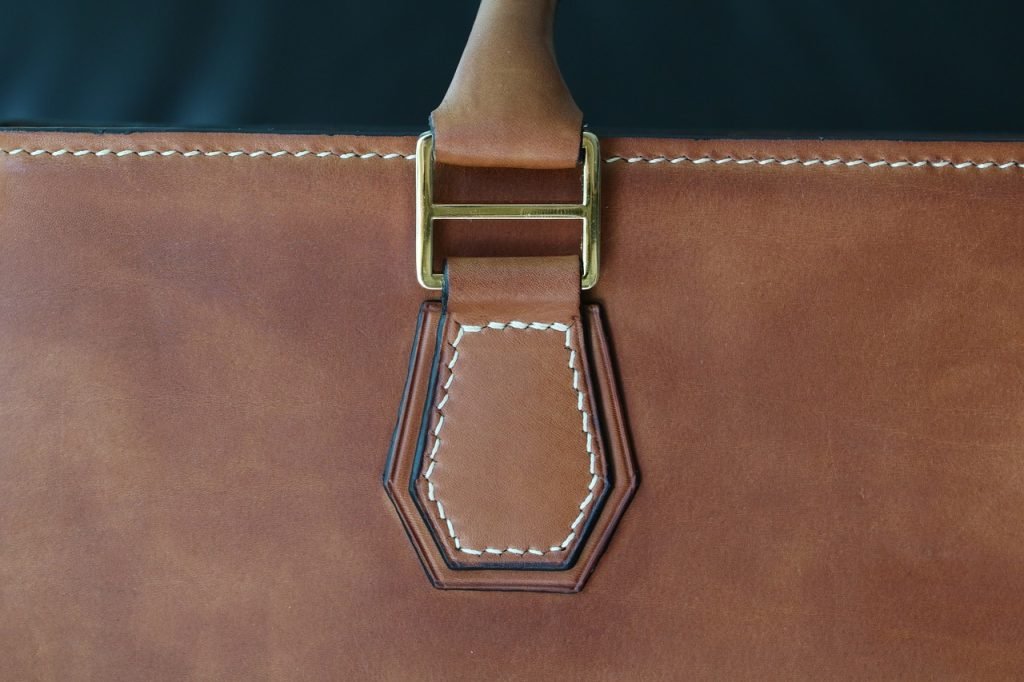
Needle Types
Now that you understand the important factors to consider, let’s explore the various types of needles available for hand-stitching leather. Each needle type has its own purpose and characteristics, making them suitable for different stitching applications.Harness Needle
Harness needles are one of the most commonly used needle types for hand-stitching leather. They have a sharp triangular tip and are designed for penetrating thick and heavy leathers. Harness needles are ideal for projects such as belts, saddles, and dog collars, where durability and strength are paramount.Saddler Needle
Similar to harness needles, saddler needles are also used for stitching thick and heavy leathers. They have a slightly different shape with a sharp triangular tip, making them highly effective for punching through leather without causing damage. Saddler needles are commonly used for projects like saddle repairs, harnesses, and sturdy upholstery work.Glover Needle
Glover needles, also known as glovers’ or milliners’ needles, are thinner and have a longer shape. They are designed for stitching lightweight and delicate leathers, such as gloves or garments. Glover needles have a sharp point, which allows for precise and accurate stitching. They are often used in the creation of fine leather accessories and clothing items.Taper Point Needle
Taper point needles, also referred to as sharp point or diamond point needles, are versatile and commonly used for hand-stitching leather. They have a sharp and tapered point, which enables easy penetration through various leather thicknesses. Taper point needles are suitable for a wide range of projects and are particularly useful for general leather crafting and repairs.Blunt Point Needle
Blunt point needles, as the name suggests, have a relatively dull point compared to other needle types. They are specially designed for softer leathers and materials that require a gentler touch. Blunt point needles are commonly used in upholstery work, canvas repairs, and other projects that involve softer and more delicate materials.Round Point Needle
Round point needles have a rounded, non-piercing tip, making them ideal for projects where you want to avoid puncturing the leather. They are often used for decorative stitching, such as saddle stitching, where precise puncturing is not necessary. Round point needles are also suitable for delicate leathers and fabrics that require a softer touch.
What Type and Size of Needles Should I Use for Stitching Different Thicknesses of Leather?
When stitching different thicknesses of leather for apparel, it’s crucial to use the right type and size of needles. For thinner leather, go for a size 70/10 needle, while thicker leather requires a size 100/16 needle. Use a sharp needle for thinner leather and a wedge point needle for thicker leather.
Needle Sizes
In addition to choosing the right needle type, you also need to consider the appropriate needle size for your hand-stitching project. Needle sizes are indicated by numbers, with smaller numbers representing larger needles. Here is an overview of commonly used needle sizes for hand-stitching leather:Size 000
Size 000 needles are the smallest and thinnest needles available for hand-stitching leather. They are often used for extremely delicate projects or when working with very thin leathers, such as fine garments or jewelry.Size 00
Size 00 needles are slightly larger than size 000 needles but still belong to the smaller end of the needle size spectrum. They are suitable for lightweight leathers and delicate stitching projects that require fine detailing and precision.Size 0
Size 0 needles are the next size up from size 00. They are commonly used for stitching medium-weight leathers and are versatile enough to handle a wide range of leather crafting projects.Size 1 to Size 7
As the numbers increase, the needle sizes get larger and thicker. Size 1 to size 7 needles are used for stitching heavier leathers and more substantial projects. These larger needles are perfect for upholstery work, belts, thick wallets, and other robust leather goods. Choosing the Right Needle Now that you understand the factors to consider when choosing a needle for hand-stitching leather and have become familiar with the different needle types and sizes, let’s discuss how to match these elements based on your specific needs.Leather Thickness and Needle Type
For thinner leathers, such as lambskin or garment leather, you should opt for smaller and finer needles, like glover or taper point needles. These needles provide sufficient penetration without causing excessive damage or visible puncture marks. For thicker leathers, such as saddle or vegetable-tanned leather, it’s best to choose larger and sturdier needles, such as harness or saddler needles. These needles can easily pierce through the thickness of the leather and ensure secure stitching.Thread Type and Needle Type
The type of thread you plan to use plays a significant role in determining the appropriate needle type. For most common threads, such as waxed thread or polyester thread, taper point needles are suitable. Thread thickness should also be considered, as thicker threads usually require larger needle sizes to accommodate them. It’s important to match the needle type and size with the thread type to ensure a smooth stitching process and optimal results.Stitching Style and Needle Type
Different stitching styles require different needle types and sizes. For example, the saddle stitch, which is widely used in leatherworking, involves two needles and a double-thread technique. Harness needles are commonly used for saddle stitching due to their sharp triangular tip, which facilitates easy penetration and precise stitching. It’s essential to select a needle type that is suitable for your chosen stitching style to achieve the desired outcome.Project Type and Needle Type
The specific type of project you are working on should also influence your choice of needle. Consider both the complexity and size of the project when selecting the appropriate needle type and size. For intricate and precise work, finer needles like glover or round point needles may be more suitable. Conversely, larger and more robust projects, such as belts or heavy-duty bags, require thicker and sturdier needles, such as saddler or harness needles. Needle Threaders Using a needle threader can greatly simplify the process of threading your needle, especially when working with thicker threads or smaller needle eyes. Needle threaders are practical tools that assist in guiding the thread through the needle’s eye, saving you time and frustration. Let’s take a closer look at the benefits of using needle threaders, the different types available, and how to use them effectively.Benefits of Using Needle Threaders
Needle threaders offer several advantages when it comes to hand-stitching leather. They can be particularly useful when working with hard-to-thread needles, such as those with smaller eyes or thicker threads. By using a needle threader, you can save time and prevent the thread from fraying or breaking during the threading process. Additionally, needle threaders are especially helpful for individuals with visual impairments or dexterity issues, as they make the threading process more accessible and manageable.Types of Needle Threaders
There are several types of needle threaders available, each designed to accommodate different needle sizes and thread thicknesses. The most common types include wire loop threaders, flat loop threaders, and self-threading needles. Wire loop threaders consist of a thin wire loop that is inserted through the needle’s eye. The thread is then threaded through the loop, which is subsequently pulled back through the eye, threading the needle in the process. This type of threader is suitable for most needle sizes and thread types. Flat loop threaders are similar to wire loop threaders but have a flat ribbon or tape-like loop instead of a wire. They work in the same way as wire loop threaders and are often used with larger needle sizes and sturdier threads. Self-threading needles, as the name implies, have a built-in mechanism for threading the needle. To use a self-threading needle, you simply place the thread on the designated groove or hook and slide it down into the eye of the needle. This type of needle is ideal for individuals who have difficulty with traditional needle threaders or for those who frequently change threads during a project.How to Use a Needle Threader
Using a needle threader is a straightforward process that can save you time and frustration.- Start by selecting the appropriate type of needle threader for your needle size and thread thickness.
- Insert the wire or flat loop of the threader through the eye of the needle, ensuring it passes through completely.
- Place the end of the thread through the loop of the threader.
- Gently pull the threader back out through the eye of the needle, threading the needle in the process.
- Once the thread is threaded through the needle, carefully remove the threader from the needle, keeping the thread securely in place.
Awl
An awl is a versatile tool that can be used to mark stitching lines, create holes for stitching, or help in the process of thread positioning. It has a sharp point and a handle, making it easy to grip and control. By using an awl, you can precisely and accurately mark stitching lines on your leather, ensuring even spacing and alignment of your stitches.Chisels
Chisels, also known as pricking irons or diamond chisels, are specialized tools with multiple sharp points or teeth. They are typically used to create evenly spaced stitching holes in leather before hand-stitching. Chisels are available in various spacing configurations, allowing you to achieve different stitching patterns and effects. By using chisels, you can save time and ensure consistent and professional-looking stitching on your leather projects.Pricking Irons
Pricking irons, as mentioned earlier, are chisels specifically designed for creating stitching holes. They come in different sizes and spacing options and are ideal for projects that require precise and uniform stitching. Pricking irons are commonly used in traditional leathercraft, such as saddlery or bespoke shoemaking. By using pricking irons, you can achieve accurate and visually appealing stitching patterns on your leather projects.Stitching Pony
A stitching pony, also known as a stitching horse or clam, is a specialized tool used to secure the leather in place during hand-stitching. It typically consists of a clamping mechanism that grips the leather firmly, leaving your hands free to manipulate the needle and thread. Stitching ponies come in various designs, including tabletop versions and freestanding models. By using a stitching pony, you can improve the stability of your work and achieve neater and more consistent stitching.Thimble
A thimble is a protective tool worn on the finger to shield it from the needle during hand-stitching. Thimbles are available in various materials, such as metal, leather, or even silicone, and come in different sizes to accommodate different finger sizes. By wearing a thimble, you can prevent needle pricks and create more forceful and accurate stitching motions without discomfort. Thimbles are especially useful when stitching through thicker or tougher leathers. Tips for Hand-Stitching Leather Hand-stitching leather requires practice and attention to detail. To help you achieve the best possible results, here are some tips to keep in mind:Use a Proper Stitching Technique
Learning and using the correct stitching technique is essential for achieving clean and durable stitches. The saddle stitch, for example, is a popular and reliable method that involves passing each needle through the same hole from opposite sides, creating a double-row of stitches. By mastering the correct stitching technique for your project, you can create strong, even, and visually appealing stitches.Maintain Consistent Tension
Consistent tension is vital for achieving uniform and professional-looking stitches. If your stitches are too tight, they can distort the leather or break the thread. Conversely, loose stitches can result in a weak and sloppy appearance. To ensure consistent tension, maintain a steady and controlled pulling motion with each stitch, neither too tight nor too loose.Prevent Thread Tangling
Thread tangling can be frustrating and time-consuming. To prevent this from happening, keep your thread neatly wound and organized during your stitching process. Avoid letting the thread tangle or twist as you stitch. If you notice any tangles or knots, stop and untangle them before continuing. By maintaining organized and untangled thread, you can streamline your hand-stitching process.Avoid Overloading the Needle
Avoid overloading the needle with excessive thread during stitching. Overloading can cause the thread to twist, snag, or break. Instead, use a suitable amount of thread for your project, typically about three times the length of the stitching line. This ensures that you have enough thread to complete the stitching without unnecessary bulk or strain on the needle and thread.Use a Suitable Thimble
Using a suitable thimble can greatly enhance your hand-stitching experience. A thimble should fit comfortably on your finger, providing protection and control. Consider the type of thimble that suits your preferences and needs. Metal thimbles offer durability and better protection but may feel heavier. Alternatively, leather or silicone thimbles provide a lighter and more flexible option. Experiment with different types of thimbles to find the one that feels most comfortable for you.Practice on Scrap Leather
Before starting a significant leather project, it’s beneficial to practice your stitching skills on scrap leather. This allows you to familiarize yourself with the materials, needles, and thread, as well as refine your stitching technique. By practicing on scrap leather, you can gain confidence and improve your skills before embarking on your final project.Keep Your Needles Clean and Sharp
Regularly clean and sharpen your needles to maintain their effectiveness. Leather, especially thicker varieties, can dull needles quickly. A blunt or dull needle can cause uneven stitching and damage the leather. Use a fine-grit sandpaper or needle sharpening tool to sharpen the tips of your needles. Additionally, ensure that your needles are free from any adhesive residue or dirt before you start stitching. Keeping your needles clean and sharp will result in clean, precise, and professional stitches. Common Mistakes Despite your best efforts, it’s possible to make some mistakes during the hand-stitching process. Here are some common mistakes to avoid when hand-stitching leather:Using the Wrong Needle
Using the wrong needle for your leather and stitching project can result in difficulty piercing the material, visible puncture marks, or uneven stitching. Choose needles that are appropriate for the thickness of your leather, the type of stitching you plan to use, and the appearance you want to achieve. Using the right needle will greatly improve the quality of your stitching.Using the Wrong Thread
Using the wrong thread, such as a weak or unsuitable type, can lead to thread breakage, inconsistent tension, or compromised durability. Always choose a thread that is strong enough to withstand the demands of your leather project. Consider the material, thickness, and intended use of your leather, and select a thread that matches these requirements.Inconsistent Stitch Length
Inconsistent stitch length can detract from the overall appearance and durability of your leather project. It’s important to maintain a consistent stitch length throughout your stitching lines. This can be achieved by ensuring consistent tension and controlling your stitch length with each individual stitch. Consistency in stitch length contributes to a cleaner and more visually appealing finished product.Incorrect Needle Poking Angle
Poking the needle through the leather at the wrong angle can result in uneven stitch depth and visible puncture marks. The needle should be pierced straight through the leather, maintaining a consistent angle for each stitch. This ensures that the needle’s path remains consistent, resulting in even and neat stitches.Insufficient Thread Tension
Insufficient thread tension can lead to loose stitches that are prone to unraveling or breaking. It’s important to maintain appropriate tension when pulling your thread through each stitch. Consistent and moderate tension ensures that the stitches are secure, maintaining the durability and longevity of your leather project. Conclusion When it comes to hand-stitching leather, selecting the right needle is crucial for achieving professional-looking results. Factors such as leather thickness, thread type, stitching style, and project type all play significant roles in determining the appropriate needle type and size. By considering these factors, you can choose the perfect needle for your specific project needs. Additionally, using needle threaders and other alternative tools can simplify the stitching process and enhance your overall experience. By following the tips and avoiding common mistakes, you can hand-stitch leather with confidence and create beautiful and durable pieces that will stand the test of time. So, next time you embark on a leather crafting adventure, remember to carefully consider your needle choices and enjoy the rewarding experience of hand-stitching leather.